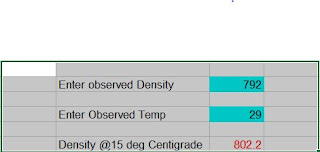Aviation Turbine Fuel and British Airways Flight 38 Accident - Accident details - Part 2
Aviation Turbine Fuel and British Airways Flight 38 Accident - Accident details - Part 2
This is
in continuation of “Aviation TurbineFuel and British Airways Flight 38 Accident - part 1”, a blog series
for understanding Aviation turbine fuel’s role in modern civil flights
specially behavior of water in fuel to mitigate it’s adverse effects during
flight, including at high altitude where water will turn into ice.
Accident details:
The aircraft used for the flight was Boeing 777-236ER G-YMMM (manufacture's serial number 30314 powered by two Rolls-Royce Trent 895-17 engines. The aircraft first flew on 18 May 2001 and was delivered to British Airways on 31 May 2001. It had seating capacity for 233 passengers.
 |
| BA -038 barely cleared Motor way A30 and suddenly manage to halt at the Runway starting end. |
Flight 38's route took it over Mongolia, Siberia and Scandinavia, at an altitude which varied between 34,800 and 40,000 ft (FL348–400, between 10,600 and 12,200 m), and in temperatures between −65 and −74 °C. Aware of the cold conditions outside, the crew monitored the temperature of the fuel, with the intention of descending to a lower, warmer, level if there was any danger of the fuel freezing.This did not prove necessary, as the fuel temperature never dropped below −34 °C, still well above its freezing point ( - 57°C ) and spec limit of - 47°C max.
Although the fuel itself did not freeze, small quantities of water in the fuel did. Ice adhered to the inside of the fuel lines, probably where they ran through the struts attaching the engines to the wings.This accumulation of ice had no effect on the flight until the final stages of the approach into Heathrow, when increased fuel flow and higher temperatures suddenly released it back into the fuel. This formed a slush of soft ice which flowed forward until it reached the Fuel-Oil Heat Exchangers (FOHEs) where it froze once again, causing a restriction in the flow of fuel to the engines.
The first symptoms of the fuel flow restriction were noticed by the flight crew at 720 feet (220 m) of height and only 2 miles (3.2 km) of distance from touchdown, when the engines repeatedly failed to respond to a demand for increased thrust from the autothrottle. In attempting to maintain the instrument landing system (ILS) glide slope, the autopilot sacrificed speed, which reduced to 108 knots (200 km/h) at 200 feet (61 m). The autopilot disconnected at 150 feet (46 m), as the co-pilot took manual control. Meanwhile, the captain reduced the flap setting from 30 degrees to 25 degrees to decrease the drag on the aircraft and stretch the glide.
The plane passed above traffic on the A30 road and the airport's Southern Perimeter road and landed on the grass approximately 270 metres (890 ft) short of runway 27L The captain declared an emergency to the control tower a few seconds before landing.
During the impact and short ground roll, the nose gear collapsed, the right main gear separated from the aircraft, penetrating the central fuel tank and cabin space, and the left main gear was pushed up through the wing. The aircraft came to rest on the threshold markings at the start of the runway. A significant amount of fuel leaked, but there was no fire.
Video - ATC recording at the time - BA 038 crash at Heathrow:
Try to listen - a superb professional reaction from ATC. some of the comments on above video are:
- Hats off to the air traffic controller. You could hear the adrenaline in his voice but he did everything he needed to do.
- The lady controller handling the arrivals knew that the shit had hit the fan and that the tower controller was maxed out so she just says " ok, ok, tah",goes to prove that less is more.
- These guys are so professional. They have a crash of one of the world's biggest aircraft on one of the world's busiest runaways, and they don't miss a beat. They jump right to work redirecting the air traffic within seconds.
- This is absolutely amazing. The calmness of the flight crew, controllers and emergency services is almost unbelievable. This is the result of brilliant training.
- These pilots are just as good, if not better than the pilots that landed the US Airways flight in the Hudson River. My hat off to them and the ATC controllers.
Keep looking next parts for interesting reading water and Jet A-1 behavior during flight.
- Report on the accident to Boeing 777-236ER, G-YMMM, at London Heathrow Airport on 17 January 2008
- Wikipedia https://en.wikipedia.org/wiki/British_Airways_Flight_38
- Youtube - https://youtu.be/lJNVVlBPi8M
- https://rjpatelioc-petroleum.blogspot.com.au/2018/03/british-airways-flight-38-accident-and.html
- Youtube - https://youtu.be/lJNVVlBPi8M
- https://rjpatelioc-petroleum.blogspot.com.au/2018/03/british-airways-flight-38-accident-and.html
British Airways flight BA 38 accident and Aircraft Jet A-1 fuel System - part 5
British Airways flight BA 38 accident and Jet A-1 fuel temperature - part 4
British Airways flight BA 038 fuel temperatureaspects - part 3
British Airways flight BA 38 accident and Jet A-1 fuel temperature - part 4
British Airways flight BA 038 fuel temperatureaspects - part 3

Comments